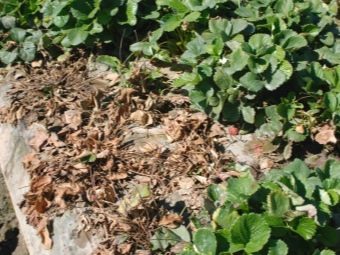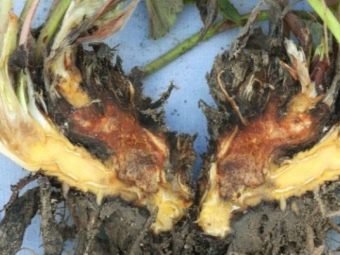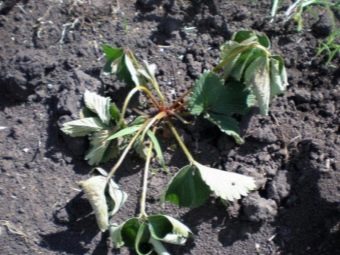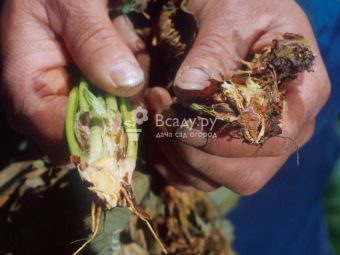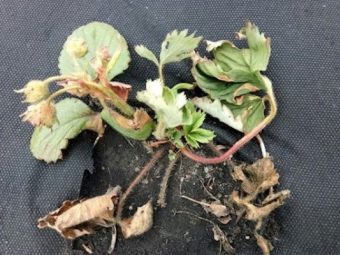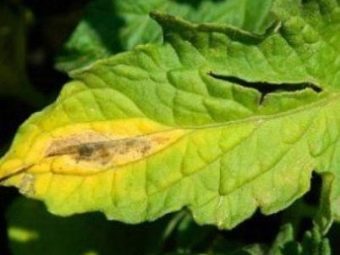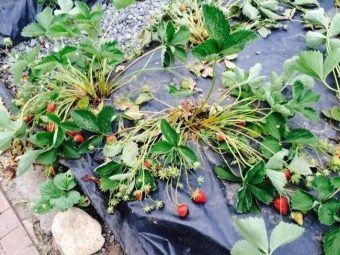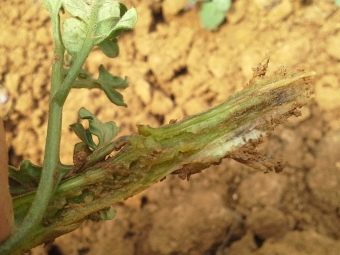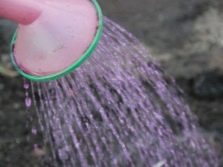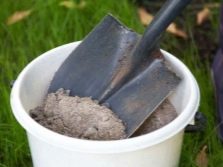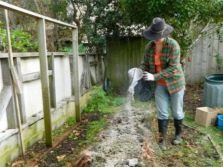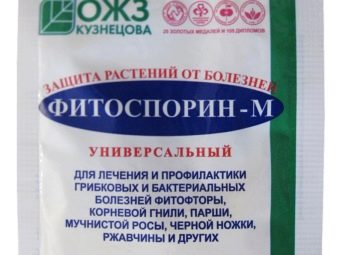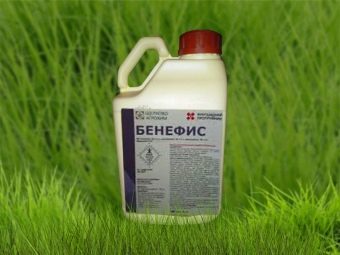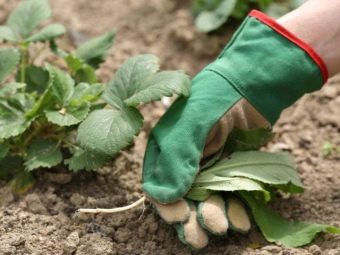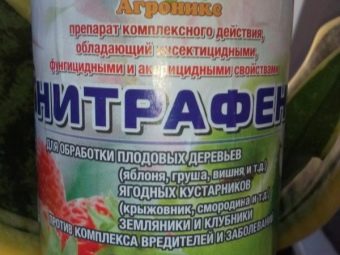How to treat fusarium wilting strawberries?
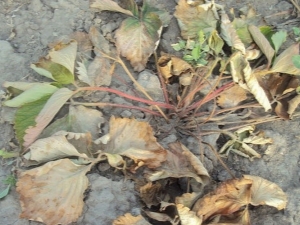
Fusarium is a common fungal disease to which a large number of garden crops are exposed.Strawberry is no exception and suffers from a fungus no less than others. The cunning of the disease is that it is impossible to completely eliminate the risk of its occurrence. Plants can get sick at almost any age and at any stage of their development.
Danger of illness
Fusarium wilt (lat. Fusarium Oxysporum) is considered one of the most dangerous diseases. The disease completely affects the whole plant from the roots to the tips of the leaves, and since the center of the disease is in the underground part of the shoot, it is almost impossible to recognize it at the initial stage. Distributors of fusarium are weeds, many vegetable crops and contaminated soil. The parasitic fungus is characterized by high viability and is able to infect the soil and plants for 25 years. Fusarium causes significant yield losses, which, with advanced forms of the disease and with its late recognition, can be 50%.
The first mentions of laboratory studies of fusarium are from the twenties of the last century. It was then that in the countries of Western Europe and the USA they first noticed the emergence of a new disease. The first studies were carried out in relation to strawberries, the shoots of which died from damage to the root system by an unknown pathogen. The disease received the name of Lancashire and was carefully studied.
An analysis of the disease, taking into account the growing conditions of the plant and the course of the disease, has shown that the disease has a fungal nature and is caused by high soil moistening. However, a little later, in 1935, experts from Germany and the United States independently of each other concluded that the disease is viral in nature and is caused by fungi of the genus Fusarium or Phytophthora. Today, there is very little information about this insidious disease, and there are no specific recommendations for its treatment.
Moreover, many experts believe this disease is extremely dangerous and requires more detailed study.
The main danger of fusarium is that It affects not only the leaf cover of the plant. The main stem wilts, growth is stopped, the flower stalks dry out and fall off, the root system is affected by rot, and as a result the plant dies. However, the process of the harmful action of the fungus does not end there: the dead plant itself becomes a source of infection and infects other shoots through the soil.
Background and signs of illness
Fusarium wilting begins with the root system. Initially, the fungus penetrates the shallow root processes and advances to larger roots, from which it passes through the stem system and leaves into the stem. The first signs of plant damage occur already when the root system is seriously affected by a fungus, and consist in the wilting of the leaf cover of the lower tier. The upper leaves are covered with light green and yellowish spots, and their edges become watery.
If plants that grow in conditions of high humidity have undergone the disease, then, in addition to spotting, the leaves can become covered with white bloom and sag.
The process of withering occurs, as a rule, during the filling of the berries. This is explained by the fact that during this period the root system works for wear, trying to provide the necessary substances with pouring fruit. As a result, the immunity of plants in this period is experiencing significant stress and under the invasion of the fungus drops sharply. As a result, the plant becomes ill, and after a month and a half dies.
If at this moment to make a transverse incision of the stem, then it can be seen that the conducting vessels, which are responsible for the delivery of essential nutrients to all plant organs, have noticeably darkened and changed structure. At a root incision, a change in the structure of the central cylinder and a change in its color to brown is also observed.
The main reasons for the occurrence of Fusarium include improper care of strawberries and gross violations of agricultural technology. It may be too close to the bushes to each other, planting crops on highly acidic and heavy clay soils with a high moisture content. In plants growing on such soils, there is a disturbance in the normal air exchange of the roots, which is why they begin to subside and become most vulnerable to fungal attacks. Among the causes of fusarium wilt, there is also an excess of chlorine-containing fertilizers and the proximity of strawberry plantations to busy highways or harmful industrial enterprises.
Paradoxically, but also the lack of moisture also leads to the defeat of plants by fusarium. With poor watering, the root system dries out, and the weakening and cracking of the root processes occur. As a result, the plant becomes unprotected against the fungus and quickly falls ill. And also to the risk zone include bushes that grow in too hot regions and areas with high humidity.
Methods of struggle
It is possible to treat fusarial wilting of strawberries with the help of both folk remedies and modern antifungal drugs. When detecting the first signs of illness, one should not panic and destroy the entire plantation. The disease is focal in nature, and you can try to save healthy plants. To do this, it is necessary to pry and burn sick specimens, and immediately apply preventive measures to healthy ones.
An effective tool is to spray strawberry bushes with a solution of potassium permanganate with the addition of boric acid. Well, it helps and pouring the beds with wood ash, pre-mixed with powdered sulfur. Experienced gardeners recommend in such cases Immediately liming using chalk or dolomite flour. The fact is that the fungus does not tolerate soils with a neutral environment, and especially suffers from an excess of calcium in them.
Treatment with ready-made preparations is also quite effective. As a prophylactic treatment used, as a rule, biological agents, among which the most common and well-proven are "Agat-23 K" and "Gumat K". Good results are shown by root treatment with the non-pathogenic isolate F. Oxysporum, developed and tested by scientists from Japan in 1991. If the disease has nevertheless appeared, then at its initial stage the effective method is treating the bushes with “Trichodermine” or “Phytodoc”.
In the case of mass disease of strawberries, the use of chemical agents is recommended, the most effective of which are considered to be Fundazol and Benorad.
Good results are obtained by treating the plantations with the fungicides “Fitosporin”, “Benefice” and “Sporobacterin”, which, like the previous preparations, can be applied both by spraying and through a drip irrigation system.
If all measures taken to save the plant were useless, then the plantation should be completely destroyed. Plants are pulled out along with the roots and burned, and the vacated area is processed with the help of Nitrofen and dug up. It is possible to re-plant strawberries at this place only after 6 years.
Often the disease is easier to prevent than to spend time and energy on its treatment. Therefore, for planting, it is necessary to choose only healthy seed, and plant it in a decontaminated soil, in which it is recommended to add nitrate nitrogen in the spring. If plants with fusarium plants already grew on the plantation, then it would be advisable to grow strawberry varieties such as Arosa, Boheme, Sonata, Omskaya early, Red Gontlet and Talisman. These varieties are fairly resistant to fungi and are able to provide the owners of strawberry plantations with a rich harvest.
How to treat strawberry fusarium, see the next video.

